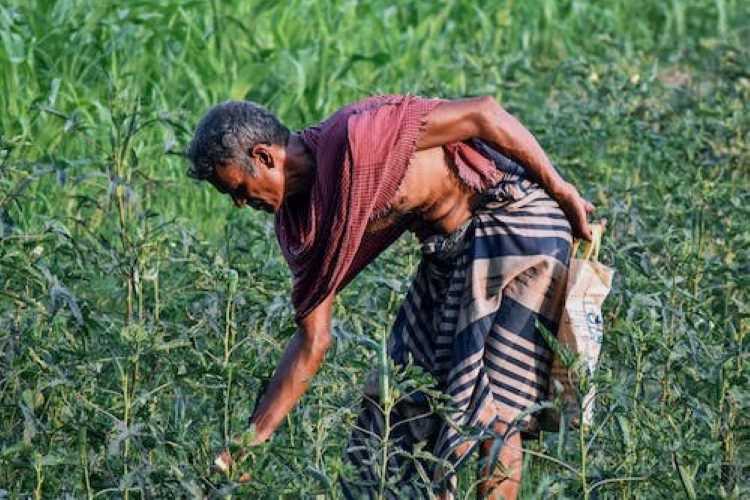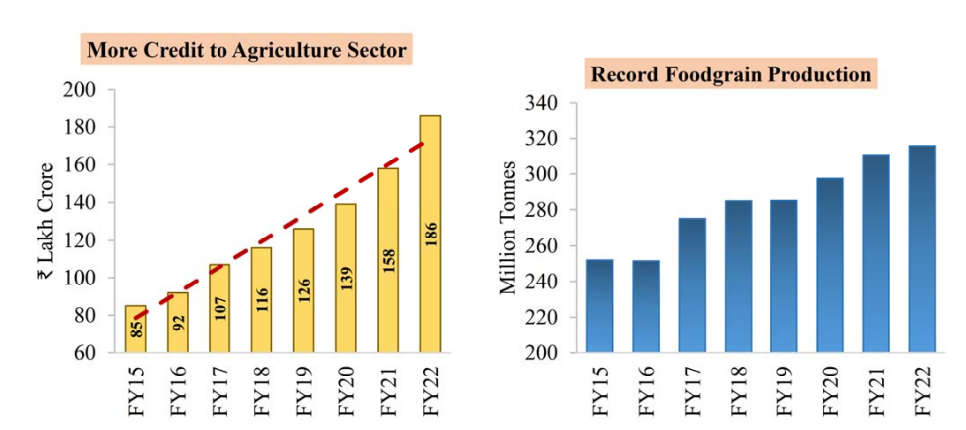
Budget 2023 allocation for rural sector: The Union budget for 2023-24 has come in the backdrop of slowing demand resulting from a slowdown in private investment. More than 55% of the population feel that economic situation has worsened while 16% is not hopeful of an improvement, according to the latest consumer outlook survey by the RBI. ‘One year ahead expectation’ also reveals a pessimistic outlook with 36% feeling that the situation will worsen. These figures show that though the consumer confidence has been improving slowly, it remains gloomy. In the light of these findings, it is imperative for the government to take remedial measures to boost demand.
The discussion on demand assumes added importance when it comes to the rural economy as around 65% of the population still live in villages. There was a time when the FMCG market was growing at a faster rate in rural India compared with the urban growth rate. Today, the situation is not very encouraging. So, the analysis of the budget 2023 proposals for the rural sector makes sense.
The finance minister’s focus on agriculture sector is heartening – there are measures for boosting millet production and marketing as well as for enhancing organic farming. These measures are aimed at making India a global hub for millets by allocating funds for developing technologies and enhancing research in this sector.
READ I Budget 2023: India needs to push the envelope to allay ecological concerns
Budget 2023 earmarks less for rural sector
These initiatives are of considerable significance. However, the allocation of funds to the crop husbandry sector leaves a lot to be desired. In fact, there is a decline in real terms. The allocation for 2023-24 is Rs 71,378 crore compared with Rs 80,137 crore last year. The revised estimate for the sector in the current year is Rs 69,528 crore.
Around 80% of the agriculture sector in India comprise small and marginal farmers for whom marketing is a major problem. Lack of storage facilities add to this problem. How to give a better price to small and marginal farmers was the focus of the last few budgets, but this budget is silent on the issue.

Apart from the fluctuating prices of their produce, farmers also face uncertainties climate change-related uncertainties. Fasal Bima Yojana saw limited success with about 25% of the cultivated land being covered. There is a need to make this scheme attractive by introducing technologies for better assessment of crop loss. The budget has allocated Rs 13,625 crore for crop insurance compared with Rs 15,500 crore last year.
A large section of small and marginal farmers is dependent on formal loans that come with a 2% subsidy. However, funds allocated for interest subvention scheme also show a decline in real terms with an allocation of Rs 23,000 crore in 2023-24 compared with Rs 22,000 in 2022-23. However, the thrust on the primary agricultural credit societies (PACS) in the budget is a welcome move as the poorer sections of farmers have much better access to the cooperative banks. If the promise of PACS developing storage facilities materialises, it will help small and marginal farmers.
Whether these measures will help the government achieve the goals of doubling farmers’ income and boosting rural demand is yet to be seen. Nonetheless, CAPEX spending is expected to generate non-farm rural employment in construction and other activities.
Another major concern in the rural sector is the declining employment rate of women. The budget has something to offer in this respect. Women’s self-help groups (SHG) will play an important role in rural areas. Through such groups, the women can access the formal financial sector and take up small livelihood activities using bank credit. But these activities are often individual-based, and therefore cannot make much difference in terms of income generation.
The budget talks about creating producer enterprises by combining large number of small SHGs and helping them to access technology and market. If this programme can be successfully implemented, it can help generate farmers’ income as well as rural demand.
(Meenakshi Rajeev is Professor at Institute for Social and Economic Change, Bangalore.)
